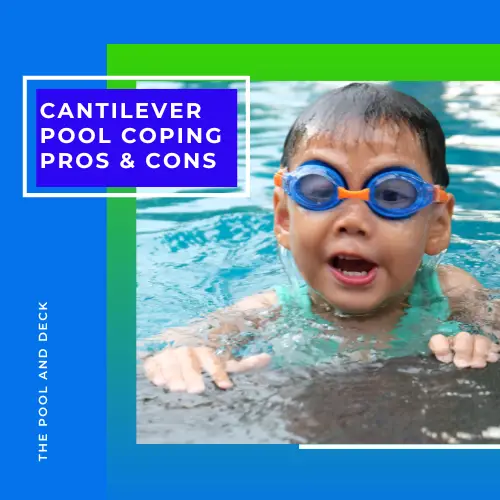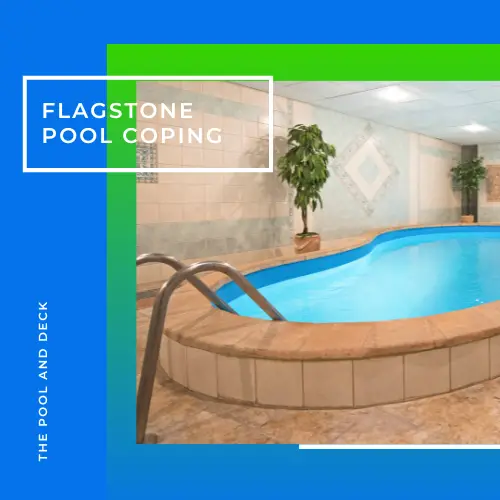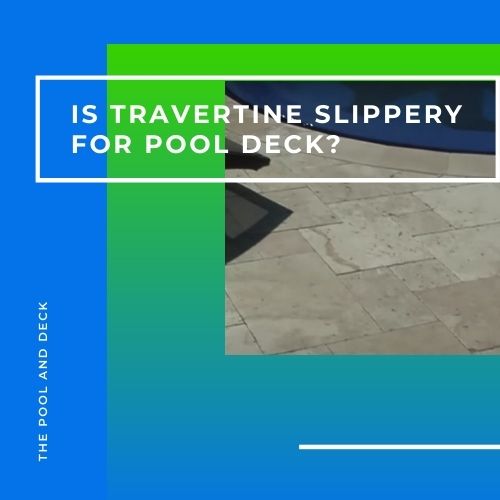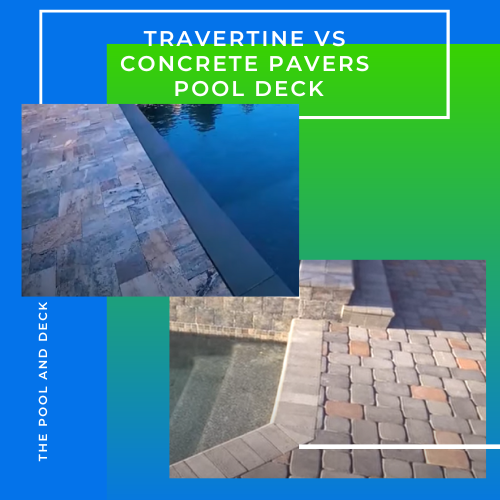Cantilever Pool Coping Pros and Cons: Is it the Best Design?
What Is Cantilever Pool Coping? What is the truth behind Cantilever Pool Coping Pros and Cons? Is it the best design? This post covers all the question that you may have about cantilever pool coping pros and cons!
The cantilever pool coping is designed and constructed to extend out from the edge of the pool to create an overhang or lip above the water. The lip makes getting in or out of the pool a lot easier. You do not need to swim to the pool steps or ladder.
Swimmers can also use the cantilevered edge of the coping to hang onto when they want to take a break from swimming and just tread water.
Children who are just learning to swim can use it to hold onto as they practice their leg strokes. Elderly can use it as a support while doing their pool exercises.

In addition to the functional benefits, a cantilever pool coping gives the pool and the deck a very modern and streamlined appearance.
Cantilever pool coping can be made of concrete (poured or precast blocks), natural stone or even metal such as aluminum.
When it comes to cantilever pool coping pros and cons, there are quite a few worth taking note of. So let’s get into it!
Table of Contents
What Are Cantilever Pool Coping Pros and Cons?
Cantilever Pool Coping Pros
Cantilever pool coping has several benefits, including:
- Increased Safety: The overhang of the cantilever coping helps prevent swimmers from slipping or falling into the pool. This added safety feature can be especially important for families with young children or for those who are less steady on their feet.
- Improved Drainage: The overhang of the cantilever coping helps to channel water away from the pool and deck, reducing the risk of water damage or erosion. This improved drainage can also help keep the pool and deck area dry and slip-resistant.
- Improved Aesthetics: The smooth, sleek look of the cantilever coping enhances the overall appearance of the pool area and gives it a more finished look.
- Seamless Transition: The cantilevered design of the coping creates a seamless transition between the pool and the deck or patio area.
- Versatility: The cantilever coping can be designed and customized to match the style and design of the pool and surrounding area. This allows you to create a unique and personalized look that complements the rest of your outdoor space.
- Ease of Installation: Since the cantilever coping is poured and installed at the same time as the concrete deck, it is a simpler and more straightforward process than installing a separate coping stone or brick. This can result in faster and more efficient installation, as well as a more secure and stable finish.
- Reduced Maintenance: Quite often the cantilever coping is made from concrete, which is durable and long-lasting. It is also easy to clean and maintain.
Cantilever Pool Coping Cons
While there are many benefits to cantilever pool coping, there are also a few disadvantages to be aware of:
- Cracking: While concrete is a durable material, it can crack, chip, or stain over time. This can detract from the appearance of the pool and coping, and may require repairs or replacement in the future.
- High Repair Cost: The cost of repairing a cantilever pool coping can be extremely high due to the cost of materials and labor involved in demolishing the damaged coping and pouring it fresh.
What are the Different Types of Pool Coping?
There are 4 main types of pool coping.
1. Cantilever Coping
Cantilever pool coping extends out from the pool’s edge, creating an overhang over the pool.
2. Bullnose Coping
Bullnose coping is the most traditional type of pool coping, featuring a rounded edge. It is commonly used with concrete and gunite pools and can be made from a variety of materials such as stone, concrete, and pavers.
3. Coping Tiles
Coping tiles are small, rectangular tiles that are used to line the top edge of a pool. They are a popular choice for their versatility, as they come in a variety of colors, materials, and patterns to match any pool design.
4. Laminar Coping
Laminar pool coping features a smooth, streamlined edge, creating a modern and sleek look. It is usually made from concrete or stone and is a popular choice for contemporary pool designs.
What are the Different Materials Used for Pool Coping?
Some of the popular materials used for pool coping are:
Concrete
Concrete is a popular material for pool coping due to its durability and versatility. It can be molded into a variety of shapes and colors, and can be painted or stained to match your pool’s color scheme.
Pros:
- Durable
- Versatile
- Can be molded into various shapes and colors
- Can be painted or stained to match pool color scheme
Cons:
- Can crack over time
- Can be slippery when wet
Natural Stone
Natural stone gives your pool a timeless and elegant look. It is durable, non-slip, and comes in a variety of colors and patterns to choose from. Some really popular natural stones are travertine, limestone and sandstone.
Pros:
- Durable
- Natural and elegant appearance
- Non-slip surface
Cons:
- Expensive
- Requires regular sealing to prevent staining
Pavers
Pavers are small, interlocking stones that can be used to create a variety of patterns and designs for your pool coping. They are durable, non-slip, and come in a variety of materials, including concrete, brick, and natural stone.
Pros:
- Durable
- Non-slip surface
- Versatile design options
Cons:
- Can be slippery when wet
- Can shift or settle over time
Tiles
Tiles are thinner than pavers but can be used as pool coping due to their durability, slip-resistance, and variety of designs and colors. They are made from ceramic, porcelain, or glass and go very well with modern and contemporary pool designs.
Pros:
- Durable
- Slip-resistant
- Wide variety of designs and colors
Cons:
- Can crack or chip over time
- Can be slippery when wet
Bottom Line
The bottom line is that if you plan to build a new pool this year you need to have a clear understanding of cantilever pool coping pros and cons along with your other options.
Thank you very much for reading the post. I do hope you found it informative and helpful.






